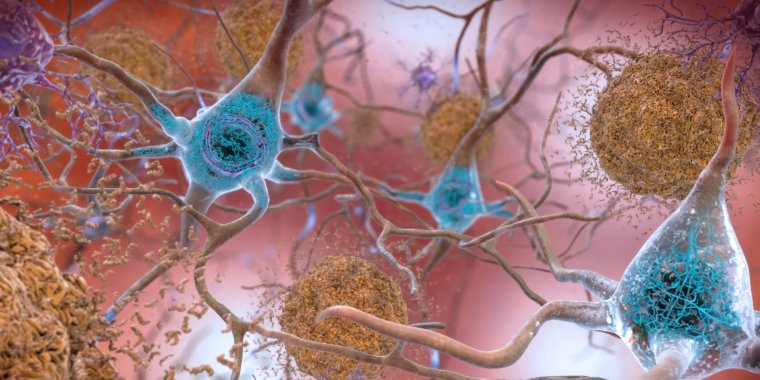| Health / Health News |
Researchers May Have Found Way to Prevent Alzheimer's Disease
Researchers at University of New Mexico believe they may have found a way to prevent Alzheimer's disease.

Beta-amyloid plaques and tau in the brain. Photo: National Institute on Aging/NIH
UNM's Health and Sciences Department Associate Professor Kiran Bhaskar and his team started to test the vaccine on mice. PhD student Nicole Maphis says the vaccine targets a specific protein known as tau that's commonly found in the brains of Alzheimer's patients.
Maphis was pleased with test results. "These antibodies seem to have cleared (out) pathological tau. Pathological tau is one of the components of these tangles that we find in the brains of patients with Alzheimers Disease," she explains. Those long tangles "disrupt the ability of neurons to communicate with one another," the school points out, adding that tau is "normally a stabilizing structure inside of neurons."
The mice were then given a series of maze-like tests. The mice that received the vaccine performed a lot better than those that hadn't. Despite that, Maphis and Bhaskar say this isn't a complete success just yet. Being able to get the vaccine to people will not only take a few more years, but could cost up to $1 billion. "We have to make sure that we have a clinical version of the vaccine so that we can test in people," Bhaskar says.
Testing just a small group would cost $2 million. Alzheimer's affects almost a-third of senior citizens and "is on the rise, currently affecting 43 million people worldwide. (Tasnim News Agency)
YOU MAY ALSO LIKE



